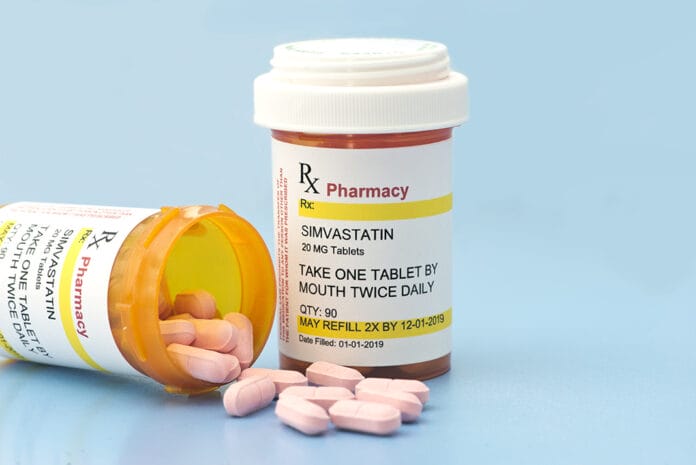Cholesterol can be controlled by diet, weight management, exercise, and lifestyle, although in some cases, medications may be required. Medications are confusing to dental patients − multiple names and pronunciations, and the spelling is a nightmare. Patients are often unsure what medications they consume and will disclose two medications only to find out it’s the same medication.
Or they know it’s a cholesterol medication, and it starts with an “A,” but nothing more.
Dental professionals should be familiar with the different types of medications and their purposes. This awareness will be beneficial for the dental patient and making the health history as accurate as possible.
Cholesterol medications work in a variety of modes. To be knowledgeable about what the medications do for the body will improve care.
Cholesterol
Cholesterol is a waxy, fat-like substance found in all the cells of the body and is used to make hormones, vitamin D, and maintain the cell membrane. It’s an essential fat the liver produces from animal foods and provides stability in the cells. The body requires cholesterol to function well. However, having too much in the blood raises the risk of coronary artery disease.
Lipoproteins are types of cholesterol, classified as low-density lipoproteins and high-density lipoproteins. Lipids need to be attached to proteins to be able to move through the blood.1
Low-Density Lipoproteins
Low-density lipoproteins (LDL) are considered the “bad” cholesterol. High LDL levels lead to a buildup of cholesterols in the arteries. This, along with other substances, forms plaque in the arteries causing atherosclerosis.
The hardening and narrowing of the arteries slows and blocks the blood flow to the heart, increasing the risk of coronary artery disease.2 High cholesterol is considered above 150 mg, and cholesterol medications are usually recommended when the LDL level is 190 mg or higher.1,2
High-Density Lipoproteins
High-density lipoproteins (HDL) are the “good” cholesterol. HDL carries cholesterol from other parts of the body back to the liver, which breaks down the cholesterol to be removed from the body. It is beneficial in removing LDL and maintaining the health of the blood vessels’ inner walls to prevent damage. This provides protection from heart disease.3
Triglycerides
Triglycerides are a type of fat found in the blood. The body converts excess calories into triglycerides and stores them in fat cells. Hormones eventually release triglycerides for energy between meals. Increased triglycerides may contribute to the hardening of the arteries or thickening of the artery walls, which increases the risk of stroke, heart attack, and heart disease.4
Pharmacology
Statins – Statins are the most common type of cholesterol medications prescribed. They are known as HMG CoA reductase inhibitors and work in the liver to prevent cholesterol from forming.5 Statins may lower the risk of heart disease and stroke. To determine a statin for medication depends on cholesterol levels and other risk factors for cardiovascular disease.1
Statins are most helpful in people without heart or blood vessel disease but who do have a 10-year risk of a heart attack or have one or more cardiovascular disease risk factors such as high blood pressure, cholesterol, diabetes, and smokers. They are also for people who already have cardiovascular disease related to hardening of the arteries, such as previous heart attacks and strokes caused by blood vessel blockages, ministrokes, peripheral artery disease, or prior surgery to open or replace coronary arteries.
Recommendations for statins include extremely high LDL cholesterol levels over 190 mg or with diabetes with the LDL range between 70-189 mg, especially if blood vessel disease is present.6
- Atorvastatin (Lipitor):10-80 mg daily
- Fluvastatin (Lescol): 20-80 mg daily or split twice daily
- Lovastatin (Mevacor, Altoprev): 20-80 mg
- Pravastatin (Pravachol): 10-80 mg
- Rosuvastatin (Crestor): 5-40 mg
- Simvastatin (Zocor) 5-40 mg
Statins
Side Effects of Statins: Side effects are tolerated by most and tend to go away after the body adjusts to the medication.1
- Muscle soreness
- Pain
- Increased blood sugars
- Constipation
- Nausea
- Diarrhea
- Stomach aches and cramps
- Increased blood sugar, which may lead to type 2 diabetes, more likely with already elevated blood sugars
- Muscle cell damage is very rare, but, with very high doses, it can cause a release of myoglobin into the bloodstream and cause severe muscle and kidney damage
- Liver damage occasionally can be caused by an increase in liver enzymes
- Reports of memory problems are inconclusive with studies, but it has been reported from people taking statins6
Drug Interactions or Precautions for Statins: Some acid reflux medications, blood thinners, antibiotics ending in –mycin, niacin, bile acid sequestrants, fibrates, antifungals ending in –azole, blood pressure, heart, organ transplant and HIV protease inhibitors, oral contraceptives, and St John’s wort.7
Dental Concerns of Statins: May be an increased calcification of the tooth’s pulp chamber and reduced pulp chamber height, causing root canal challenges. Research found that taking statins may lower periodontal disease and gingival inflammation; while the statins decrease arterial inflammation, it may also work on oral tissue.8
Combination Statins (Caduet)
Vytorin and Caduet medications may be used if cardiovascular disease is involved.
Caduet (atorvastatin and amlodipine) decreases LDL, triglycerides, and blood pressure.
Side Effects of Combination Statins (Caduet)
- Facial and neck flushing
- Dizziness
- Heart palpitations
- Muscle pain and weakness
Drug Interactions and Precautions for Combination Statins (Caduet): Some blood pressure medications, antidepressants, acid reflux, thyroid, diabetes, aspirin, vitamin D3, fish oil, and grapefruit.9
Dental Concerns of Combination Statins (Caduet): Gingival overgrowth, bleeding gingiva, and xerostomia.
Combination Statins (Vytorin)
Vytorin (simvastatin and ezetimibe) decreases LDL and triglycerides and increases HDL. It’s recommended if cholesterol levels are not controlled by diet and exercise alone. Proven to reduce heart attacks or strokes more than simvastatin alone. The usual dose is simvastatin 10mg and ezetimibe 10 to 40mg (a 10/80 mg dose increases the chance of muscle damage).10
Side Effects of Combination Statins (Vytorin)
- and abdominal pain
- Fatigue
- Gas, constipation
- Muscle soreness, weakness
- Cramps
Drug Interactions and Precautions of Combination Statins (Vytorian): Grapefruit, antifungal, certain antibiotics, HIV and hepatitis C protease inhibitors, gemfibrozil, and nefazodone.
Dental Concerns of Combination Statins (Vytorian): Swelling of the lips, tongue, or throat.10
Bile Acid Sequestrants
Bile acid sequestrants medications are also called acid-binding agents and cause the intestines to remove cholesterol. These work inside the intestines by attaching themselves to bile, resulting in less cholesterol available to the body. They decrease LDL and boost HDL.1
- Cholestyramine (Questran, Questran Light, Prevalite, Locholest, Locholest Light): 4-16g, 1-2 times daily. The dose of 4g 1-2 times per day should be increased gradually over about one-month intervals to 8-16g daily divided into two doses. The maximum dose is 24g daily taken in divided doses.
- Colestipol (Colestid) granule formulation: 5g, 1-2 times a day every 1-2 months if needed. Maintenance dose: 5-30 g once a day or in divided doses. Tablet formulation: 2g 1- 2 times daily, then in 1-2 months, increase dose by 2g if needed. Maintenance dose: 2-16g daily, once daily, or in divided doses.
- Colesevelam (WelChol) 3.75g a day in one to two divided doses
Side Effects of Bile Acid Sequestrants
- Constipation, diarrhea, gas
- Bloating, belching
- Heartburn
- Weight loss
- Nausea, vomiting, stomach pain
- Sore throat, stuffy nose
- Muscle aches and pains11
Drug Interactions and Precautions of Bile Acid Sequestrants: Reduces the absorption of fat-soluble vitamins A, D, E, and K, warfarin, thyroid, thiazide diuretics, and digoxin, antibiotics.
Dental Concerns of Bile Acid Sequestrants: None noted.
PCSK9 Inhibitors
PCSK9 (proprotein convertase subtilisin/Kexin type 9) medications are LDL-lowering drugs and bind to LDL, inactivating a protein on cells found in the liver to lower LDL cholesterol. These medications can be given with statins and are usually for people at high risk for heart disease and unable to lower their cholesterol through other means (diet, exercise, and lifestyle).
PCSK9 inhibitors are used with heterozygous familial hypercholesterolemia (an inherited genetic disorder that causes dangerously high cholesterol levels), homozygous familial hypercholesterolemia (a disorder where it is hard for the body to remove LDL cholesterol from the blood), or clinical atherosclerotic cardiovascular disease who are taking other cholesterol-lowering medications which require additional lowering of cholesterol. These types of medications are more expensive since they tend to be routed by injection.12
Injectable Medications
Often used with a genetic condition that causes extremely high LDL levels or who have heart disease and cholesterol is challenging to control with other medications. Decreases LDL.
- Alirocumab (Praluent): Initially 75 mg every two weeks or 300 mg every four weeks. If the response is inadequate, the dose may be increased to a maximum of 150 mg every two weeks by injections
- Evolocumab (Repatha): 140 mg every two weeks or 420 mg once a month by injection
Side Effects of Injectable Medications: Side effects are well tolerated and rare for serious side effects.
- Itching
- Swelling
- Pain or bruising at the injection site
- Rash, hives
- Swelling of nasal passages
- Muscle pain and spasms, back pain
- Cold-like symptoms with injection
- Liver problems12
Drug Interactions and Precautions of Injectable Medications: None noted.
Dental Concerns of Injectable Medications: None noted.
Fibrates
Fibrates are derivatives of fibric acid and are meant for lowering triglycerides and, to a lesser effect, LDL. These types of medications are used when triglycerides are extremely high (over 500 mg) and in conjunction with a proper diet. Fibrates lower LDL and raise HDL.
Medical monitoring is necessary for fibrates use due to health issues such as lipid levels along with kidney and liver functions.13
- Gemfibrozil (Lopid): 600 mg twice daily 30 minutes before breakfast and dinner. Should not be taken with statins
- Fenofibrate (Antara, Lofibra, Tricor, Triglide, Trilipix, Fenoglide, Fibricor, Lipidil, Lipofen,): doses vary
- Clofibrate (Atromid-S): 500 mg 4 times daily12
Side Effects of Fibrates:
- Nausea
- Stomachache, backache, headache
- Headaches
- Dizziness
- Muscle pain and weakness
- Bloating, belching, or vomiting
Drug Interactions and Precautions of Fibrates: Some diabetes, acid reflux, blood pressure, antidepressants, vitamins, aspirin, Warfarin, statins, Niacin, Synthroid, Tylenol, gout, immunosuppressants, and grapefruit.14
Dental Concerns of Fibrates: Xerostomia.
Cholesterol Absorption Inhibitor
Cholesterol absorption inhibitor medications reduce the absorption of dietary and biliary cholesterol through the intestines. This decreases the amount of intestinal cholesterol that is delivered to the liver. Reduced levels of cholesterol delivered to the liver results in increased hepatic LDL receptor activity, promoting an increased amount of removal of LDL cholesterol.
Used when statins cannot be tolerated, or statins alone cannot lower cholesterol.
- Ezetimibe (Zetia): 10 mg daily12
Side Effects of Cholesterol Absorption Inhibitors
- Stomach pain
- Fatigue
- Muscle and joint pain
Drug Interactions and Precautions of Cholesterol Absorption Inhibitor: Grapefruit, blood thinners, some statins, vitamins B, C, D, Synthroid, metoprolol, and cholestyramine.
Dental Concerns of Cholesterol Absorption Inhibitor: None noted.
Niacin
Niacin is nicotinic acid, is vitamin B3, and is the most effective drug in raising HDL and lowering LDL. It limits the production of blood fats in the liver and lowers triglycerides and LDLs, and raises HDL. Niacin is usually only prescribed when triglycerides are over 500mg.
It is not commonly used in diabetics as it can raise blood sugar levels. Liver functions, blood sugars, and lipid panels will need to be monitored since niacin can become toxic. This comes in prescription or dietary supplement form. The prescription form is recommended as the doses are more accurate and better regulated with lessened side effects.
- Extended-release niacin (Niaspan):1-2g daily at bedtime
- Immediate-release niacin (Niacor): 1.5-3g daily, divided dose up to three times a day
- Sustained-release (Slo-Niacin) or over the counter niacin products: 250-750 mg once per day morning or evening12
Side Effects of Niacin
- Facial and neck flushing
- Itching
- Blood sugar increase
- Upset stomach
- Jaundice
- Lightheaded feeling
- Irregular heartbeats1
Drug Interactions and Precautions of Niacin: Other cholesterol medications such as statins may increase muscle problems. Bile acid sequestrants can reduce the absorption of niacin. If niacin is taken with bile acid sequestrants, it should be taken 4-6 hours afterward. Other medications include some blood thinners, acid reflux, antidepressants, blood pressure, thyroid, and vitamins.
Dental Concerns of Niacin: Tooth and gingival pain. Avoid standing too fast from a lying or sitting position.
Omega-3 Fatty Acid Ethyl Esters
These are derived from fish oils and are chemically changed and purified. They are used in tandem with dietary changes to help lower triglycerides. Their main focus is to decrease triglycerides and raise HDL.
- Omega-3 acid ethyl esters (Lovaza): 2g twice daily
- Icosapent ethyl (Vascepa): 2g twice daily with meals
- Epanova: 2g or 4g once daily
- Omtryg: 2g or 4g once daily
Side Effects of Omega-3 Fatty Acid Ethyl Esters
- Belching
- Fishy taste
- Indigestion, gas
- Skin issues itching, rash
- Increased bleeding time
Drug Interaction and Precautions of Omega-3 Fatty Acid Ethyl Esters: Diuretics, blood thinners, birth control, hormone replacement and beta-blockers.
Dental Concerns of Omega-3 Fatty Acid Ethyl Esters: Bleeding gums, swelling with the face, lips, and tongue.
Marine-Derived Omega-3 Polyunsaturated Fatty Acids
These Omega-3 fatty acids are used in large doses to lower high blood triglyceride levels. They decrease triglyceride secretion and clear triglycerides. The therapeutic amount is 2 to 4 grams daily.5
Side Effects of Marine-Derived Omega-3 Polyunsaturated Fatty Acids
- Fishy breath
- Fishy taste in mouth
- Upset stomach
Drug Interactions and Precautions of Marine-Derived Omega-3 Polyunsaturated Fatty Acids: Blood thinners
Dental Concerns of Marine-Derived Omega-3 Polyunsaturated Fatty Acids: Extra bleeding, anti-inflammatory response.
Adenosine Triphosphate-citric Lyase (ACL) Inhibitors
Adenosine triphosphate-citric lyase (ACL) inhibitors work in the liver to slow down cholesterol production by lowering LDL. It is prescribed in adjunct to diet and statin therapy with people who have high cholesterol due to genetics or established atherosclerotic cardiovascular disease.
- Nexlizet (Bempedoic acid, Nexletol, Ezetimibe):180 mg one time daily with or without food. Should be taken with statins with dose limitations if combined with simvastatin or pravastatin.
Side Effects of ACL Inhibitors
- Bempedoic acid can increase the risk of tendon rupture, injury, or gout
- Diarrhea
- Arthralgia
- Pain in extremities
- Fatigue
- Influenza, upper respiratory tract infection, sinusitis
Drug Interaction and Precautions of ACL Inhibitors: Statins, fibrates, cyclosporine, cholestyramine, diuretics, aspirin, beta-blockers, and insulin.15
Dental Concerns of ACL Inhibitors: None noted.
Conclusion
Triglycerides and cholesterol are different types of lipids that circulate in the blood. Triglycerides store unused calories and provide the body with energy, and cholesterol is used to build cells and certain hormones. These two components are the key factors to what is determined for medication use.
Most patients who are on cholesterol medications have few side effects generally, but it does vary from person to person.1 Most side effects are systemic, with a few being dental such as xerostomia, gingival overgrowth, gingival bleeding, and calcified pulp chambers. Knowing a patient is on cholesterol medications is to know they are at a higher risk for cardiovascular disease, which alerts us to the oral-systemic risks and the periodontal disease connections.
Now Listen to the Today’s RDH Dental Hygiene Podcast Below:
References
- Mayo Clinic staff. (2018, November 20). Cholesterol medications: Consider the Options. Mayo Clinic. Retrieved from Cholesterol medications: Consider the options – Mayo Clinic.
- LDL: The “Bad” Cholesterol. (2020, October 2). Medline Plus. Retrieved from https://medlineplus.gov/ldlthebadcholesterol.html.
- HDL: The “Good” Cholesterol. (2019, April 18). Retrieved from HDL: The “Good” Cholesterol: MedlinePlus.
- Mayo Clinic Staff. (2020, September 29). Triglycerides: Why do they Matter? Mayo Clinic. Retrieved from Triglycerides: Why do they matter? – Mayo Clinic.
- Cholesterol Medications. (2020, November 11). American Heart Association. Retrieved from Cholesterol Medications | American Heart Association.
- Mayo Clinic Staff. (2020, March 14) Statins: Are these cholesterol-lowering drugs right for you? Mayo Clinic. Retrieved from Statins: Are these cholesterol-lowering drugs right for you? – Mayo Clinic.
- Moll, J. (2019, November 13). Be Aware of These Statin Drug Interactions. Very Well Health. Retrieved from Be Aware of These Statin Drug Interactions (verywellhealth.com).
- Researchers study effects of statins on dental health. (2013, November 04). American Dental Association. Retrieved from https://www.ada.org/en/publications/ada-news/2013-archive/november/researchers-study-effects-of-statins-on-dental-health.
- Caduet (Amlodipine/atorvastatin) Drug Interactions. (2021, January 6). com. Retrieved from https://www.drugs.com/drug-interactions/amlodipine-atorvastatin,caduet.html.
- (2020, October 9). RX List. Retrieved from Vytorin (Ezetimibe and Simvastatin): Uses, Dosage, Side Effects, Interactions, Warning (rxlist.com).
- Ogbru, O. (2019, July 2). Bile Acid Sequestrants. Retrieved from Bile Acid Sequestrants: Drug Facts, Side Effects and Dosing (medicinenet.com).
- Cholesterol -Lowering Drugs. (2020, July 28). Cleveland Clinic. Retrieved from https://my.clevelandclinic.org/health/drugs/8744-cholesterol-lowering-drugs.
- (n.d.). WebMD. Retrieved from Fenofibrate Oral: Uses, Side Effects, Interactions, Pictures, Warnings & Dosing – WebMD.
- Fenofibrate, Oral Tablet. (2018, December 18). Retrieved from https://www.healthline.com/health/fenofibrate-oral-tablet#dosage.
- (2020, November 1). Drugs.com. Retrieved from https://www.drugs.com/pro/nexlizet.html#S6.2.











